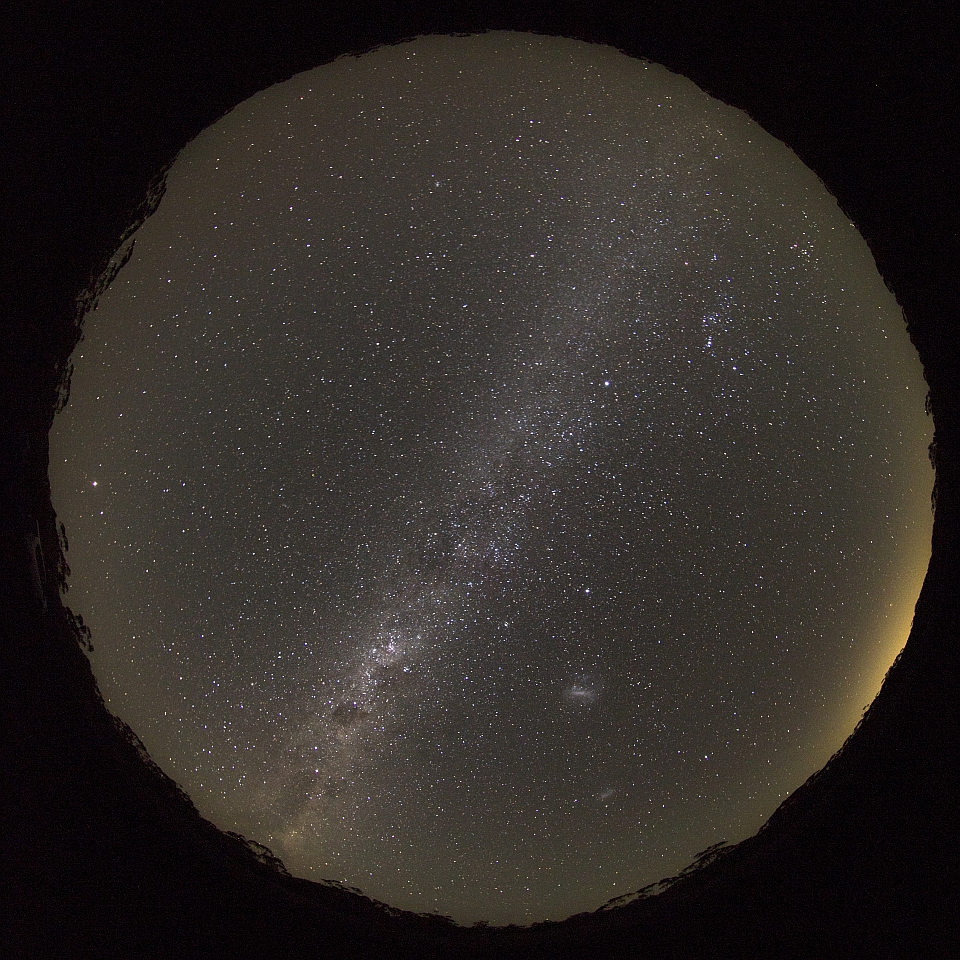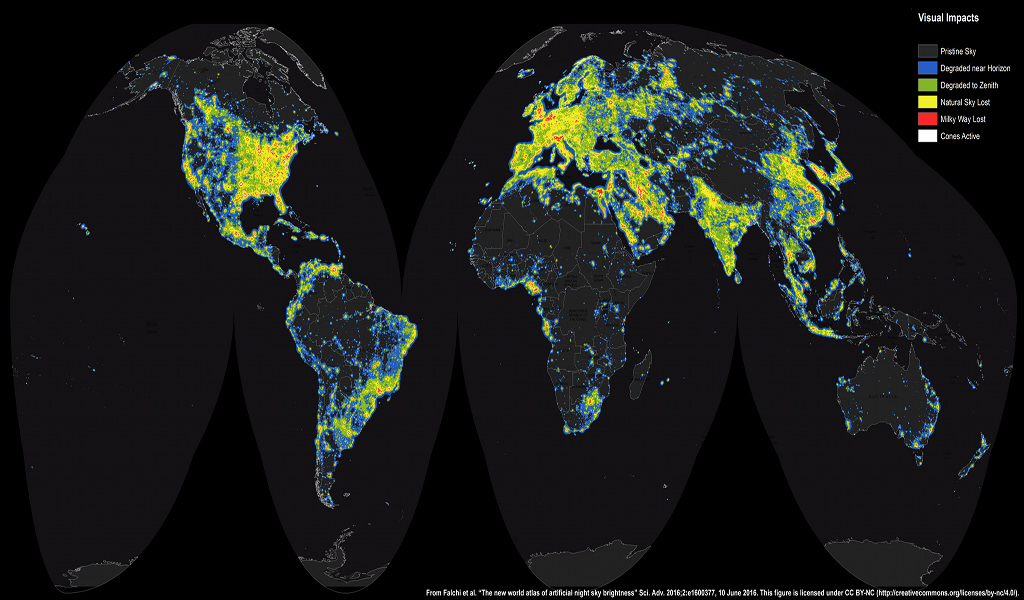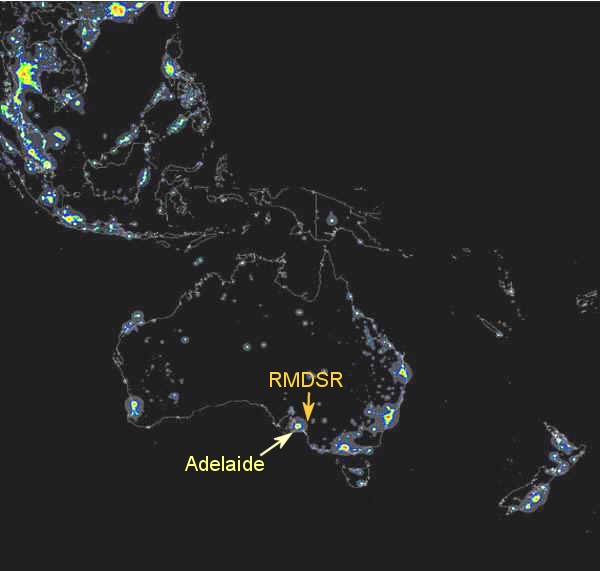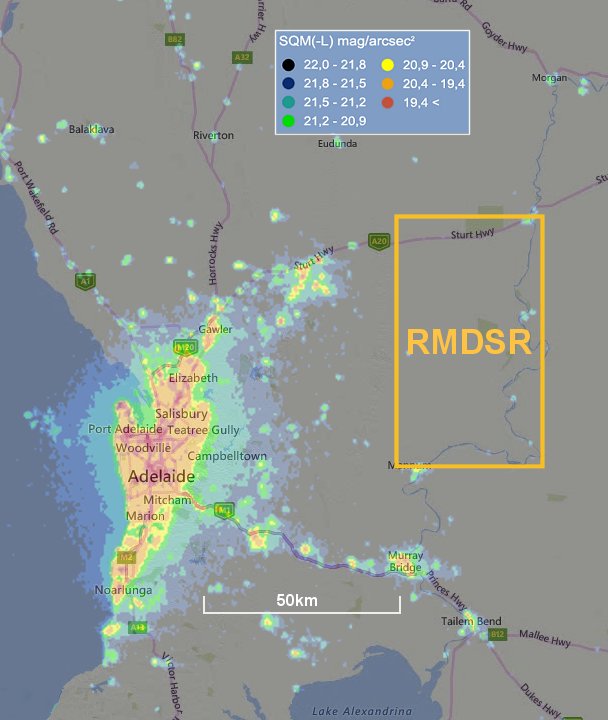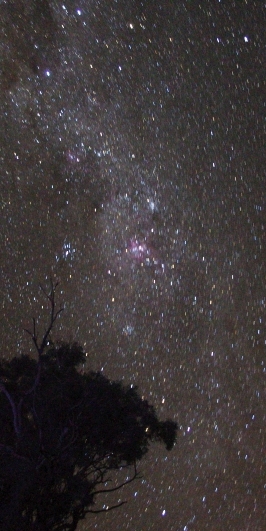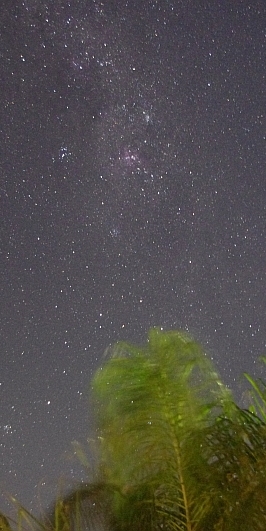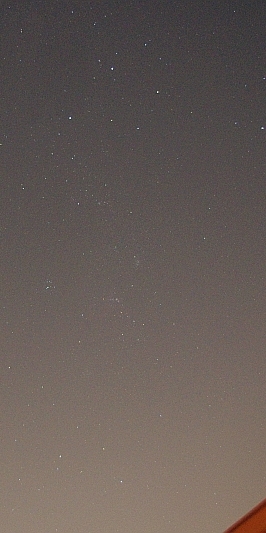Home Typical Lighting Practices LED lighting Environment Health
The Science Astronomy Links Contact
|
On Saturday 24 June 2017
the Mid
Murray Landcare Council in
conjunction with The
Mid Murray Council and the Astronomical
Society of South Australia launched
the Murray
River Dark Sky Initiative. It
was attended by the public from within and
without the region
and local aboriginal representatives at
Meldanda Reserve near Cambrai (90km
east of Adelaide in the Mid-Murray Lands).
The sky here has some of the darkest in
the world near a capital city - Adelaide,
South Australia. The Initiative aims to
preserve a 2000 sq/km area as a dark sky
reserve for astronomy, protection of flora
and fauna, education and dark sky tourism
for current and future generations. We have lodged an application for accreditation from the International Dark Sky Association in November 2017. We await the decision...
All sky photograph
of Milky Way from the
Reserve showing minimal sky glow from
capital city Adelaide 80 km due west
(Photo: Andrew Cool)
Why We Need to Protect the Night
Sky from Light Pollution Artificial outdoor lighting has
dramatically changed our night time
environment. It allows us to move around, work
and enjoy the hours into the night. It has
transformed the way we live and work after
hours. The prevalence and growth of this
outdoor lighting at night is evident in global
satellite images and images taken by
astronauts from space. On the ground out door
light illuminate roads, buildings, sports
grounds, car parks business and is used for
cultural purposes.
Light
Pollution in the World. Click on image for high
resolution Map: Light
Pollution in the World
However a significant proportion of this outdoor illumination escapes upward into the sky creating sky glow that washes out the stars. It also escapes sideways creating unwanted light trespass and glare in the urban environment. This wasted light is due to a large proportion of outdoor light fixtures that lack the proper aiming and shielding properties. In some location lights also burn all night serving little if any purpose when they may be dimmed or turned off. This wasted light is known as light pollution. It wastes money and energy often creating a nuisance. It casts a pall of light in the sky over a town or city at night seen from the country and a perpetual twilight sky that is never truly dark from within the urban environment. Light
pollution halos surrounding cities grow as
population grows and urban development spreads.
We now are forced to travel ever further to
escape the urban sky glow to experience a
natural starry sky resplendent with the Milky
Way galaxy stretching across the sky. Amateur
and especially professional astronomical
observatories are now increasingly compromised
in their effectiveness to record the faint light
of astronomical objects due to encroaching sky
glow from growing nearby cities. It is becoming
more difficult to escape the bright urban sky
glow to experience the natural, true night of a
star studded sky and its calming and wondrous
vistas. Recent scientific research is now uncovering some of the deleterious effects of light pollution on the environment and human health. Millions of years of evolution living creatures have adapted and synchronised to the circadian rhythm of the day-night cycle. Light pollution interferes with this adaptation. In animals it leads to disrupted feeding, reproduction cycles, and migration behaviour. In humans it is known to disrupt melatonin production at night leading to ailments such as obesity, diabetes, cancers and perpetual tiredness to lack of proper rest in darkness. We
humans have recognised the healing and relaxing
effect of urban parks and nature reserves to
recuperate and reconnect with the healing
effects of the natural environment. We have gone
to great efforts to preserve such natural areas
and to prevent them from the threats of
pollution and intrusive development for the
cultural, educational and relaxing benefit these
reserves afford. This same recognition should
now be extended to protection of the night sky.
Australia
is less light polluted overall due to lower
population and wide apart cities.
However most of the population is living in
densely populated urban areas with bright sky
glow. The River Murray Dark Sky
Reserve is just outside the light pollution
halo of Adelaide. Map: Light
Pollution in the World
The River Murray Dark Sky Reserve (RMDSR). Colour contours show intensity of skyglow , red in bright urban sky to grey, rural sky. The River Murray Dark Sky Reserve RMDSR) is located in a dark region that is also more cloud free than surrounding regions. It's proximity to the capital city Adelaide affords a day trip to appreciate the region and the starry sky. Colour coding refers to SQM numbers What do the SQM numbers mean?
Map adapted from : Light
Pollution Map We must recognise our night time starry environment affords the same benefits that is also under threat from light pollution from encroaching urban development and needs protection. The starry sky at night is said to have inspired the first of the sciences, astronomy. It taught us our place in the universe, encouraged invention, exploration and aided navigation. Astronomy still probes the depths of the universe and needs protected dark skies around observatories and dedicated public parks to encourage discovery and appreciation of the night sky. This
is why we propose to create a dark sky reserve
in the Mid Murray area. This region has some of
the darkest night skies near a major population
centre (Adelaide) than any where else in the
world. It is a perfect opportunity to put in
place protection of the night sky for the
benefit of all who visit who wish to reconnect
the the story of astronomy passed down from the
earliest star gazers through the indigenous
peoples of the land to story told by modern
astronomy. Martin
Lewicki Sky Quality Meter (SQM) Readings Across the River Murray Dark Sky Reserve 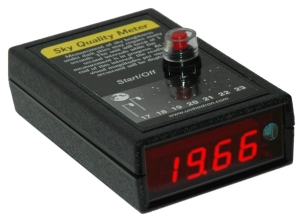
In order to acquire IDA
accreditation we need to provide sky
brightness measurements across the designated
area. During 2017 and currently on-going SQM
meter (image at right) readings show the sky
brightness is 21.9 magnitudes per square
arc second. This is about the darkest sky
possible with 20.0 the darkest practical. A
typical urban sky in Adelaide is about 19. This
makes RMDSR about 15 times darker than the urban
sky! (Note the SQM reading are logarithmic with
higher reading indicating darker
sky while lower reading
indicating a brighter sky )
More on the SQM
here.
Below: An example coverage of SQM readings as
of May 2017 in the RMDSR area. 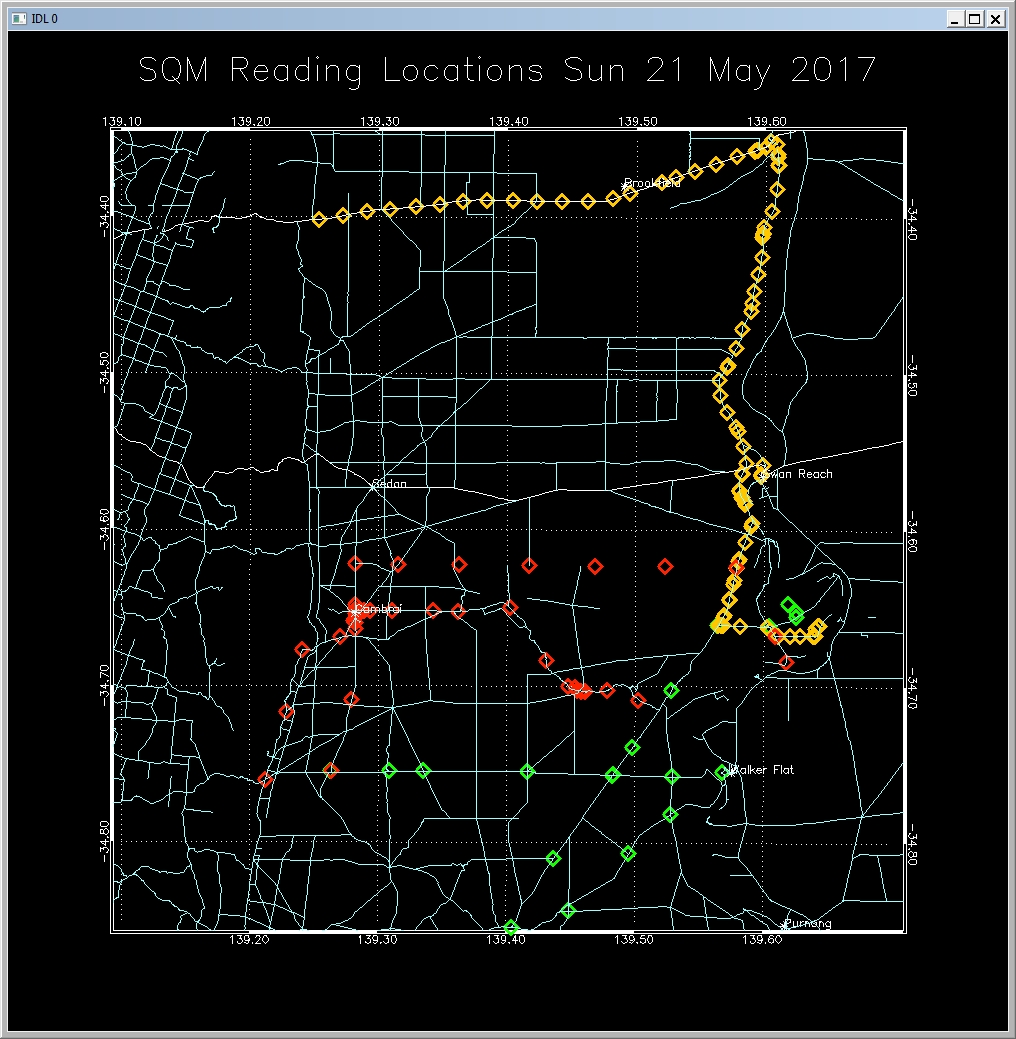 Image: Andrew Cool
Three Comparative images of
the Carina region of the Milky Way Three
photographs taken of the Eta
Carina region of the Milky Way illustrate
the effect of different levels of skyglow on the
appearance of the night sky. As a rule the sky
is darker and more starry further from light
polluted urban areas. Eta Carina is a one of the
brightest parts of the Milky Way. Its pink glow
that shows in photographs comes from
fluorescence caused by the ultraviolet radiation
of hot stars ionizing surrounding clouds of
hydrogen gas. Distance ~7,500 light years. Images
with Pentax K-x DSLR. 24mm, f4, iso1600,
6Mp, reduce to 800x531. Approximately
the same region of sky images from three
locations with from very dark sky at a RMDS
site to urban light polluted sky. Images:
Martin lewickl
What is an SQM? Read
the full documents downloads
(PDFs) River
Murray Dark Sky Reserve Application Nov
17 (8.6Mb)
River Murray Dark Sky Reserve Attachments Nov 17 (21.1Mb)
|
